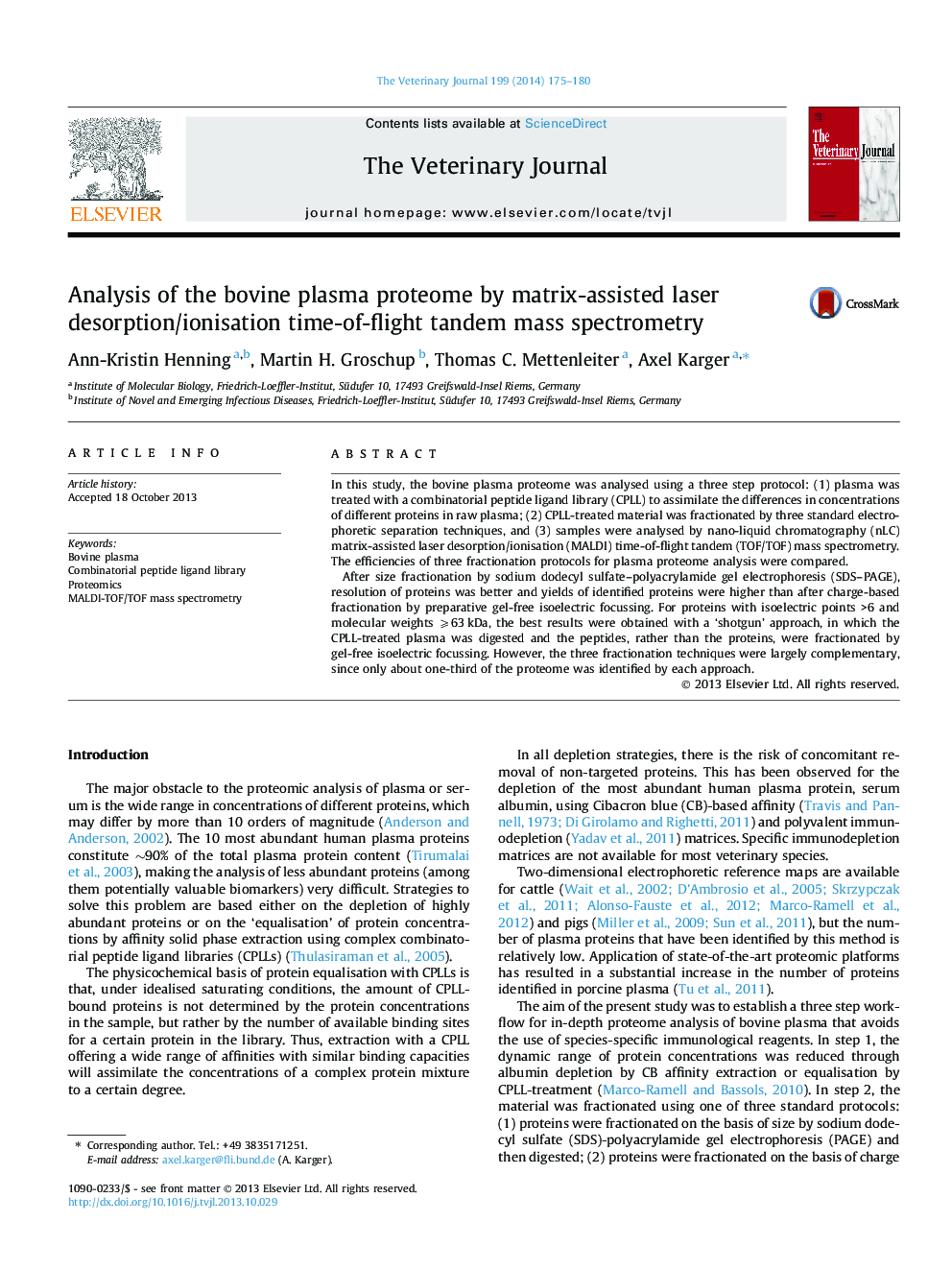| Article ID | Journal | Published Year | Pages | File Type |
|---|---|---|---|---|
| 5798637 | The Veterinary Journal | 2014 | 6 Pages |
In this study, the bovine plasma proteome was analysed using a three step protocol: (1) plasma was treated with a combinatorial peptide ligand library (CPLL) to assimilate the differences in concentrations of different proteins in raw plasma; (2) CPLL-treated material was fractionated by three standard electrophoretic separation techniques, and (3) samples were analysed by nano-liquid chromatography (nLC) matrix-assisted laser desorption/ionisation (MALDI) time-of-flight tandem (TOF/TOF) mass spectrometry. The efficiencies of three fractionation protocols for plasma proteome analysis were compared.After size fractionation by sodium dodecyl sulfate-polyacrylamide gel electrophoresis (SDS-PAGE), resolution of proteins was better and yields of identified proteins were higher than after charge-based fractionation by preparative gel-free isoelectric focussing. For proteins with isoelectric points >6 and molecular weights ⩾63 kDa, the best results were obtained with a 'shotgun' approach, in which the CPLL-treated plasma was digested and the peptides, rather than the proteins, were fractionated by gel-free isoelectric focussing. However, the three fractionation techniques were largely complementary, since only about one-third of the proteome was identified by each approach.
